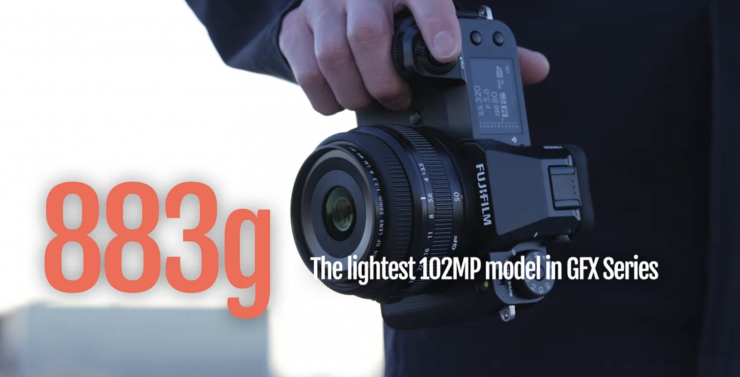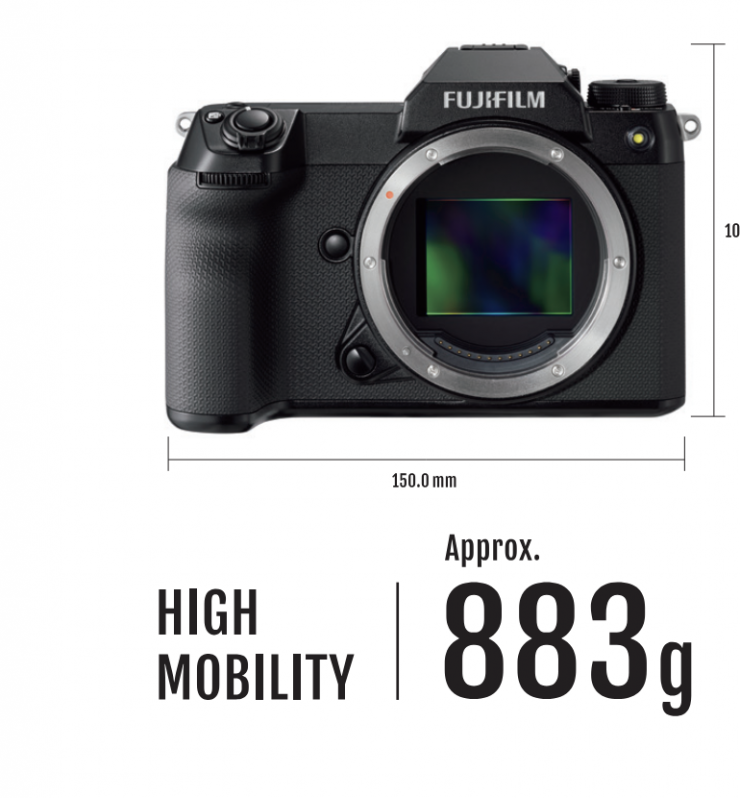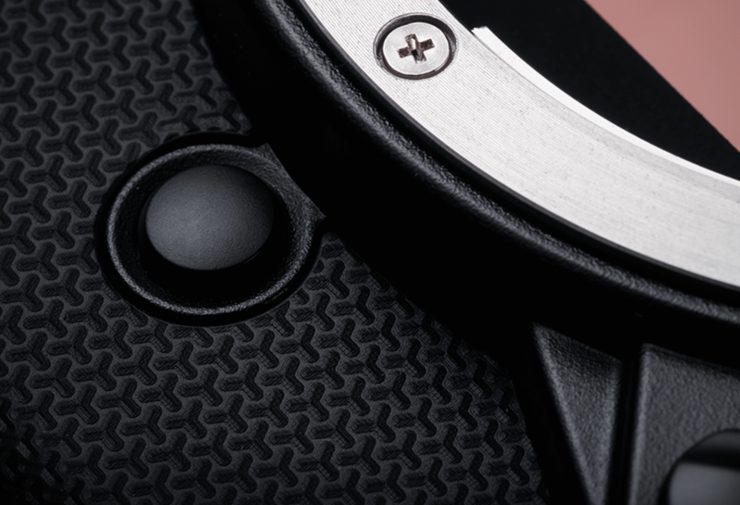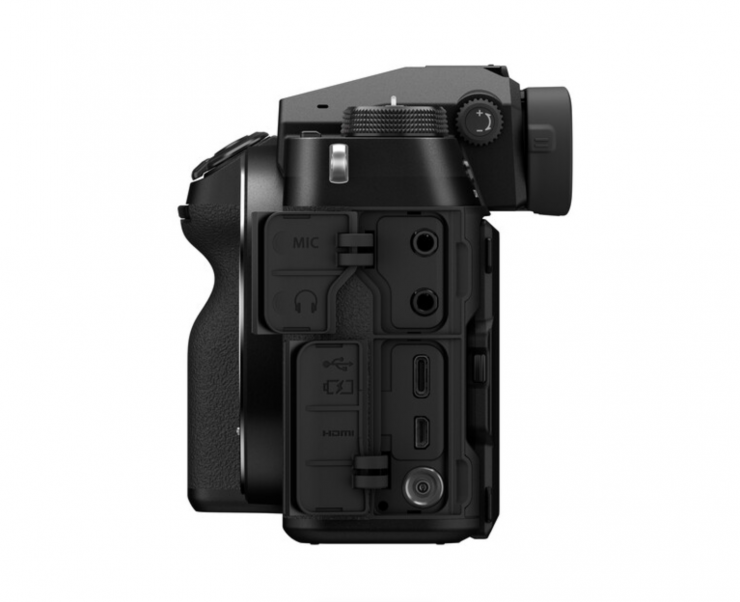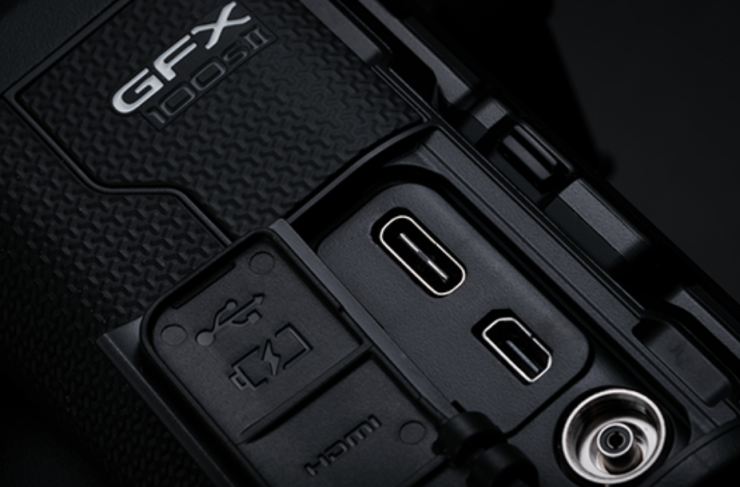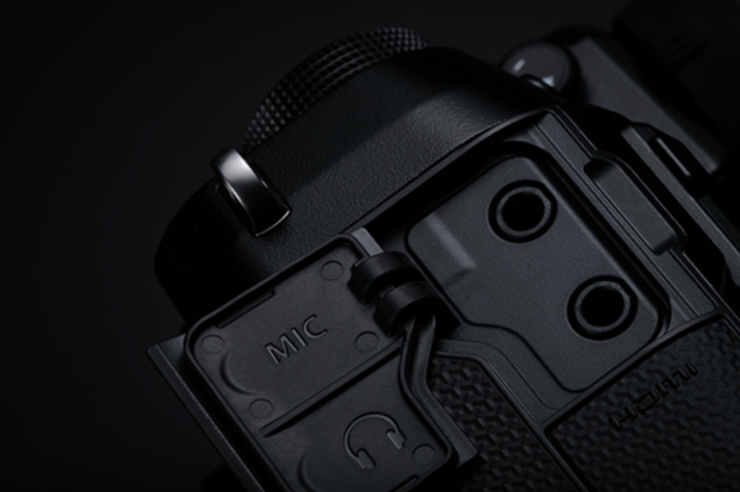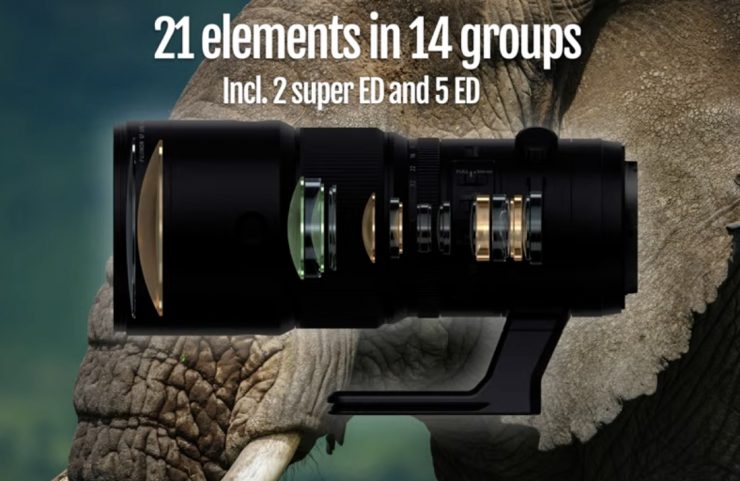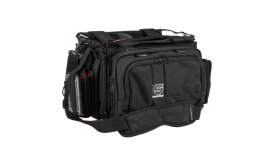FUJIFILM has announced its new GFX100S II Mirrorless Medium Format Camera, the follow-up to the original GFX100S. The GFX100S II gives you a medium format camera in the form factor of a full-frame mirrorless hybrid.
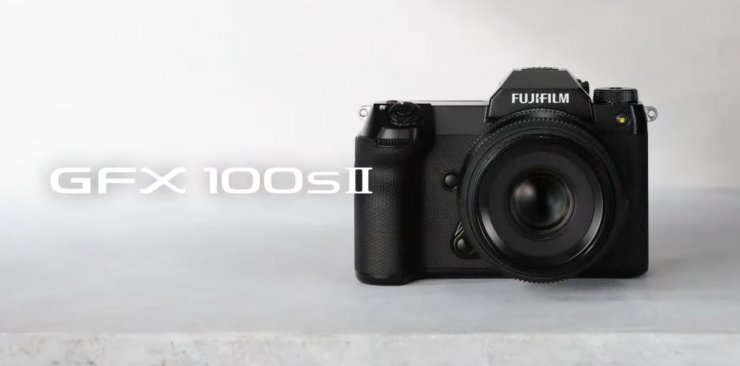
The GFX100S II features a new 102MP sensor, improved high-resolution EVF, AI-driven autofocus and intelligent subject detection, and better IBIS. An improved X-Processor 5 offers greater speed, performance, and image quality and you can capture 4K video at up to 720 Mbps in ProRes or you can output over HDMI via a compatible external recording device to record Blackmagic RAW.
The FUJIFILM GFX100S was announced back in January 2021. It was a follow-up to their 100MP GFX100, and what FUJIFILM essentially did was shrink the GFX100 and massively reduce the price.
Key features
- New 102MP CMOS II 44 x 33mm Sensor
- I-Driven AF with Improved Subject Tracking & Detection
- Upgraded 5.76m-dot EVF with 0.84x Magnification
- Up to 8-Stop IBIS + Pixel-Shift Multi-Shot Mode
- 16-Bit Raw Recording and ISO 80 Sensitivity
- 4K30p Video at 4:2:2 10-Bit, ProRes & Blackmagic RAW
- Native Frame.io Camera to Cloud Functionality
- Compact, Lightweight Body Design
Medium Format on a diet
Just like how the FUJIFILM GFX100S was a shrunken-down version of the GFX100, the GFX100S II is a shrunken-down version of the GFX100 II. The camera weighs just 1.94 lb / 883g, which means it only weighs a few hundred grams more than most compact full-frame mirrorless cameras. As a comparison, the GFX100 II weighs 2.271 lb / 1.030 kg (with battery, recording media, viewfinder).
This small size and weight make it an appealing prospect for anyone who was interested in shooting on a medium format camera but didn’t want to deal with the increased size and weight.
The main body rubber uses BISHAMON-TEX, which is also installed in the GFX100 II. The three-arrow pattern, inspired by traditional Japanese patterns, not only highlights the beauty of the camera. Improves grip in various directions when holding the camera.
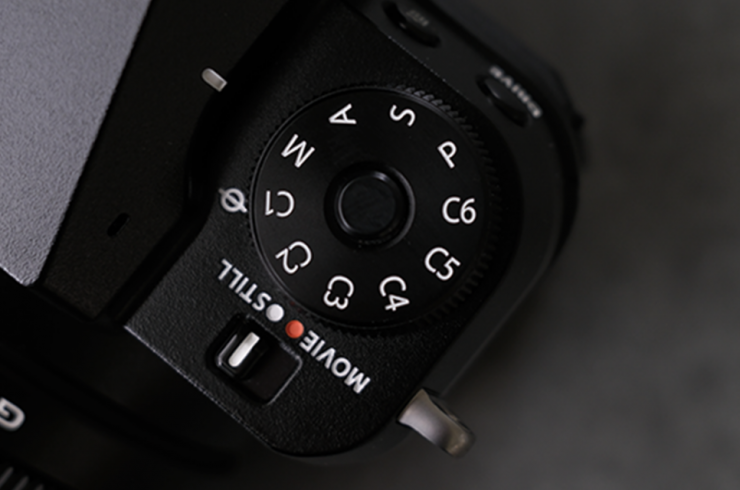
The GFX100S II also adopts a mode dial that is used in many digital cameras. Large format cameras can be operated using a familiar operation system. In addition to the PASM position, six custom positions have been added to the mode dial. You can store settings according to your usage and instantly switch settings.
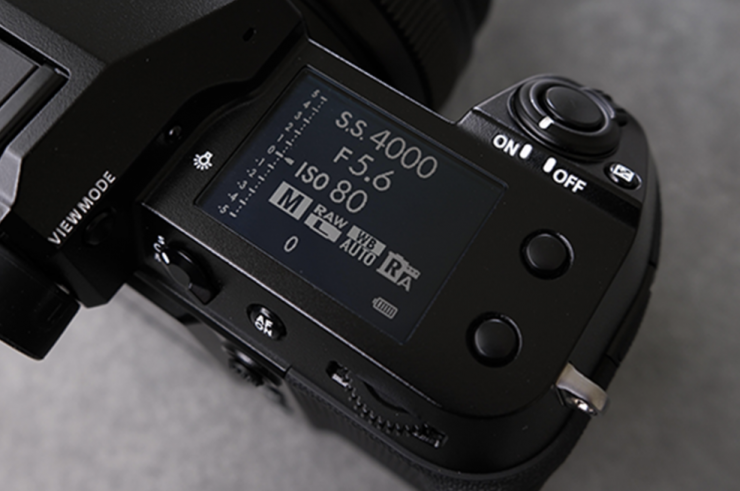
The highly visible 1.80-inch black-and-white sub-LCD monitor allows you to check key shooting information such as shutter speed, aperture, sensitivity, and exposure compensation, function icons, number of remaining shots (still images), and time (videos), and allows you to customize the display. is also possible.

Dust-proof and drip-proof structure
If you want to enjoy shooting without worry, you cannot compromise on robustness. In addition to being dust-proof, drip-proof, and low-temperature resistant with 60-point sealing, it uses magnesium alloy for high rigidity.
Same Sensor as GFX100 II
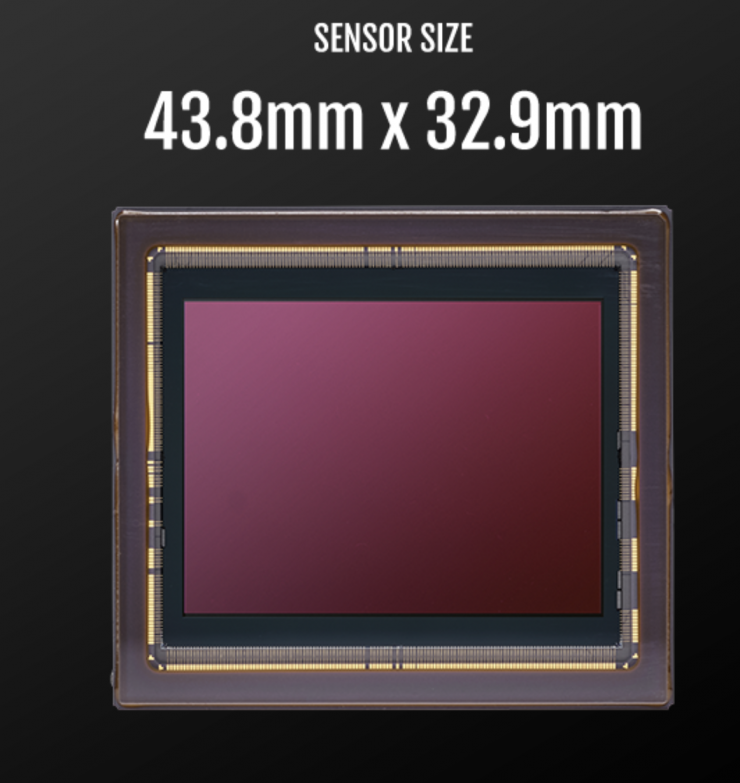
FUJIFILM has taken the exact same 102MP 43.8 x 32.9 mm (Medium Format) BSI CMOS sensor that is found in the GFX100 II. It also uses the same X-Processor 5 image processor.
FUJIFILM has been working on medium format cameras since the film era. The 55mm large-format image sensor in the GFX100S II is nearly 1.7x larger than the 35mm image sensors found in full-frame cameras.
Video Specifications
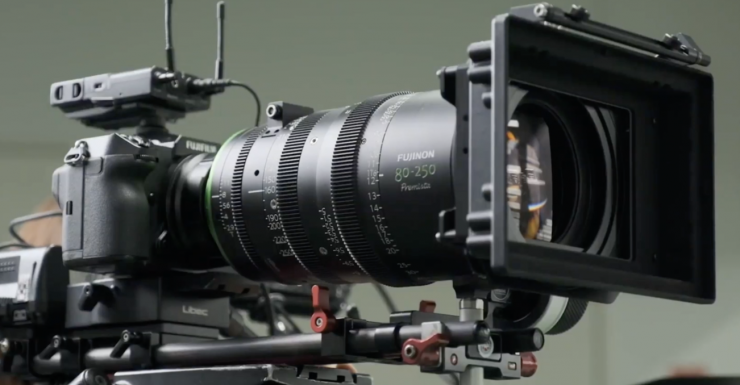
The GFX100S II supports DCI and UHD 4K video recording at 4:2:2 10-bit H.265 All-Intra internally, which is an improvement over the previous 4:2:0 10-bit. An F-log gamma setting can also be used for more advanced color grading during post-production.
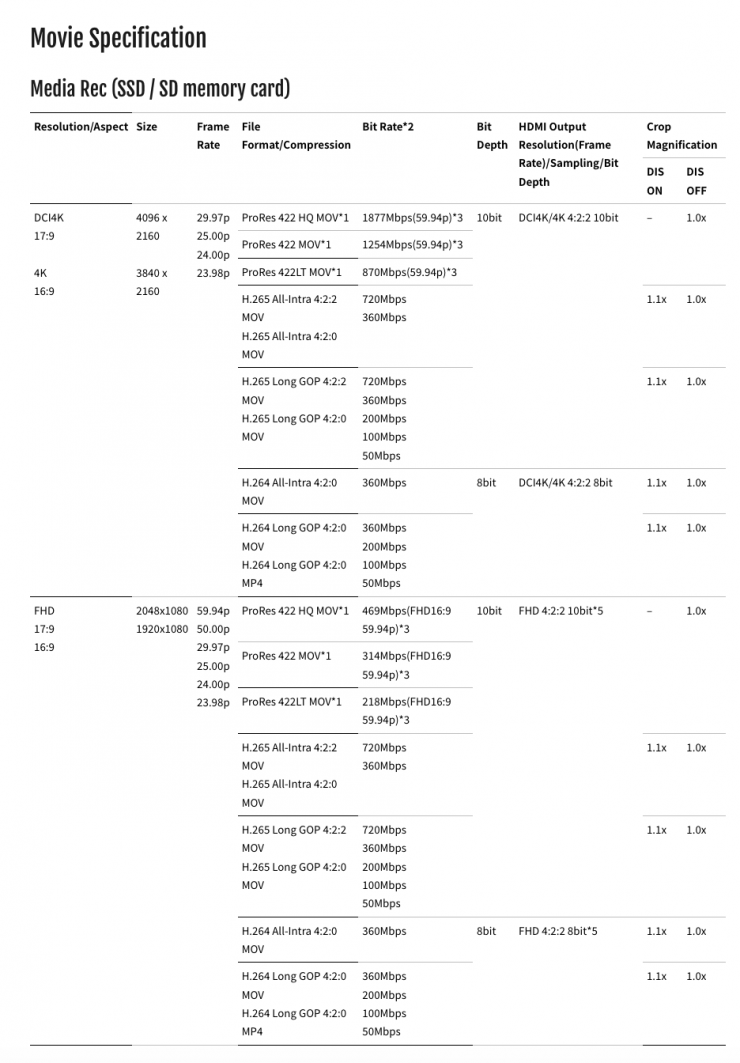
GFX100S II’s new sensor provides enhanced capabilities for video production. The camera can record Apple ProRes 4:2:2, 10-bit video at up to 4K/30p, but only over USB-C to an SSD. 4K/30p is lower than the 4K/60p and 8K/30p that its bigger brother the GFX100 II can do. The previous GFX100S could only record internally in H.265 / H.264 compression codecs, at a bit rate of up to 400 Mbps. The maximum bitrate of the GFX100S II is now 720 Mbps which is a big increase.
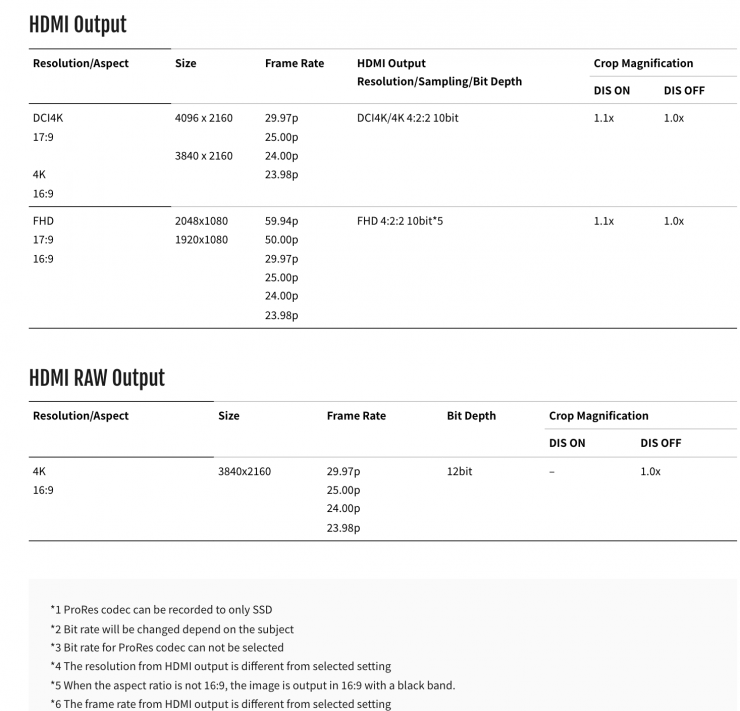
The GFX100S II supports Apple ProRes 422 HQ, Apple ProRes 422 and Apple ProRes 422 LT as I mentioned, but only when recording to an external SSD. You also have the ability to record in Blackmagic RAW over HDMI.
RECORDING RESOLUTIONS & FRAME RATES
- DCI4K (17:9): [File size]: 4096 x 2160, [Frame rate]: 29.97p/25p/24p/23.98p, [Bitrate]: 720Mbps/360Mbps/200Mbps/100Mbps/50Mbps
- 4K (16:9): [File size]: 3840 x 2160, [Frame rate]: 29.97p/25p/24p/23.98p, [Bitrate]: 720Mbps/360Mbps/200Mbps/100Mbps
- Full HD (17:9): [File size]: 2048 x 1080, [Frame rate]: 59.94p/50p/29.97p/25p/24p/23.98p, [Bitrate]: 720Mbps/360Mbps/200Mbps/100Mbps/50Mbps
- Full HD (16:9): [File size]: 1920 x 1080, [Frame rate]: 59.94p/50p/29.97p/25p/24p/23.98p, [Bitrate]: 720Mbps/360Mbps/200Mbps/100Mbps/50Mbps
With the use of an optional, third-party GF to PL lens adapter, multiple video recording formats can be natively accommodated on the GFX100S II.

GFX100S II 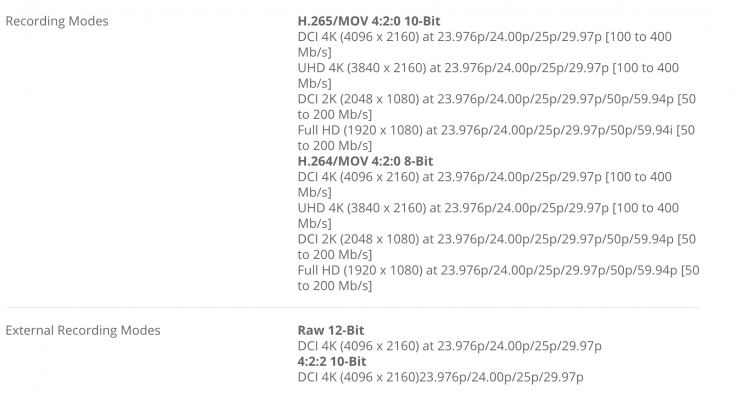
GFX 100S
I am not sure if you are working with an Atomos Ninja V, whether you can output a UHD 4K30p RAW signal that can be recorded as ProRes RAW. Unfortunately, the camera has a micro-HDMI output and not a full-sized port.
HLG recording is supported, too, for HDR applications, and F-Log, HLG, and Film Simulations can all be used simultaneously with the RAW external output.
The camera has a 3.5mm microphone jack and 3.5mm headphone jack.
Recording to External SSD via USB
By connecting an external SSD via a USB Type-C cable, you record photos and videos directly to an external SSD in all modes and formats.
Film Simulations Modes
The GFX100S II includes a total of 20 Film Simulation modes, including the new REALA ACE mode, which is based on Fujifilm’s color-negative film, offering a neutral color reproduction suitable for all subject types. Additionally, Fujifilm’s innovation of the pixel structure has enabled the use of ISO80 as a standard sensitivity.
The following Film Simulation Modes are available:
- Nostalgic Neg. effect
- Provia
- Velvia
- Astia
- Classic Chrome
- Classic Neg
- Pro Neg. Hi
- Pro Neg. Standard
- Eterna
- Eterna Bleach Bypass
- Acros
- Monochrome
- Sepia
- REALA ACE
Additionally, Grain Effect can be adjusted as well as the Classic Chrome effect to fine-tune the look of imagery.
Upgraded Stills Performance
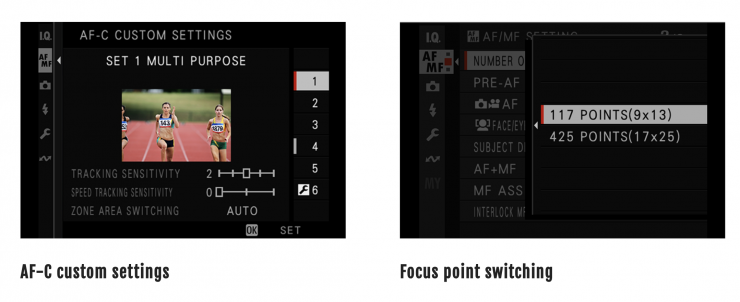
The GFX 100S II’s incredibly versatile sensor supports in-body image stabilization, allowing it to control up to 8 stops of camera shake for confident handheld use in difficult lighting conditions. This IBIS system lends itself to Pixel Shift Multi-Shot mode, too, to produce 400MP composite imagery for the utmost in resolution and color detail. High-detail single-frame shooting is backed by an impressive 16-bit color depth with raw frames, improved dynamic range, a low base sensitivity of ISO 80, and support for 10-bit HEIF shooting.

Autofocus Improvements
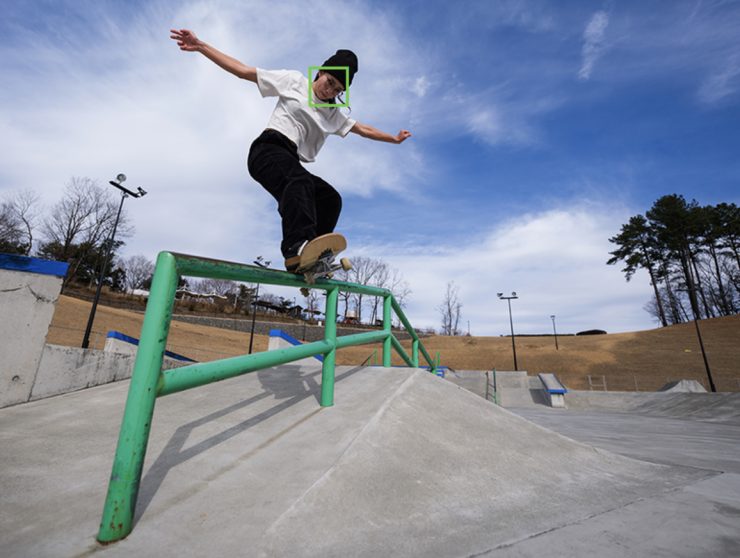
GFX100S II utilizes Fujifilm’s latest high-speed image sensor, along with its advanced image processing engine, to deliver Artificial Intelligence (AI) based subject-detection autofocus (AF), which was most recently featured in the FUJIFILM X-H2S mirrorless digital camera. Developed with Deep Learning technology and updated with the latest prediction AF algorithm, GFX100S II now incorporates AI-based subject-detection AF to quickly track and detect animals, birds, vehicles, and other fast-moving objects like insects and drones, and it automatically keeps them in focus.
Burst shooting performance has been increased from the current 5.0 frames per second to 7.0 frames per second, expanding the GFX100S II’s application across various genres, including fashion, commercial, landscape, sports, and photojournalism. An expanded buffer memory extends seamless burst capabilities.
8-Stop IBIS + Pixel-Shift Multi-Shot Mode
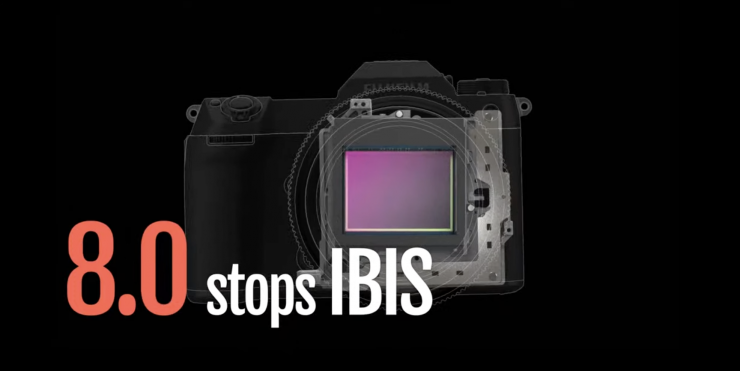
The camera features 8-Stop IBIS and a Pixel-Shift Multi-Shot Mode.
Equipped with “Pixel Shift Multi-Shot” which highly controls the in-body image stabilization function and shoots while shifting the image sensor with ultra-high precision. By shooting 16 RAW files with a shift of 0.5 pixels and combining the 16 RAW files using the dedicated software “Pixel Shift Combiner,” an image of approximately 400 million pixels can be generated. In addition, the “Real Color” mode, which shoots four RAW files by shifting one pixel at a time, generates an image with 102 million pixels that suppresses false colors with 1/4 the shooting time and data amount compared to conventional methods.
LCD Screen
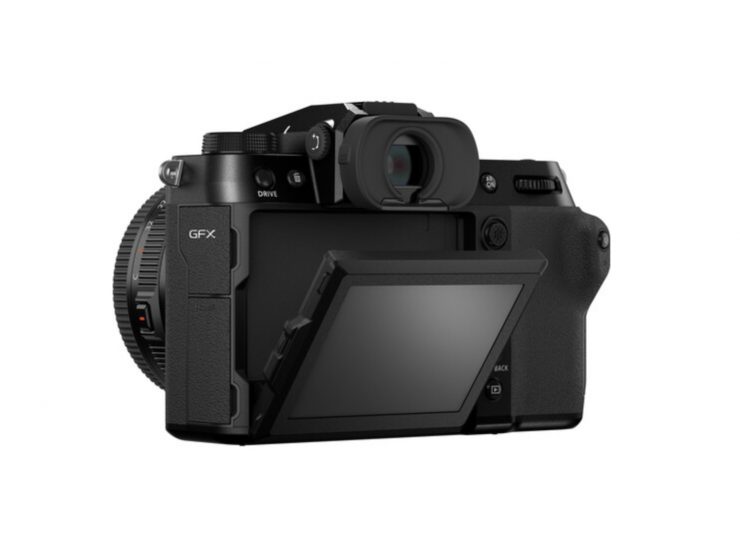
The GFX100S II has an upgraded 5.76m-dot EVF with 0.84x Magnification which is an improvement of the previous camera’s 3.2″ 2.36m-dot touchscreen LCD. This LCD features a unique three-way tilting design that moves both upward and downward for shooting from high and low angles, and also tilts to the side to benefit shooting in the vertical orientation when in live view.
Other Features
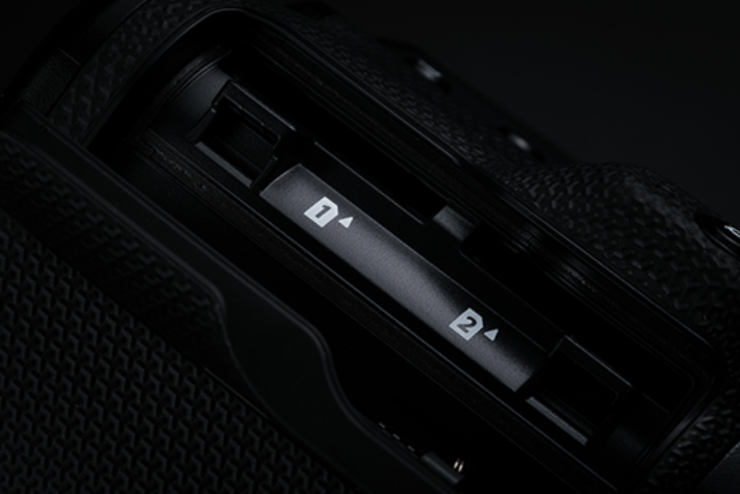
The GFX100S II also features an HDMI Micro connector (Type D), and USB-C terminals for enhanced external device connectivity. The GFX100S had dual SD/SDHC/SDXC (UHS-II) card slots, and the GFX100S II keeps those. This is interesting as I would have thought that FUJIFILM would have at least used a different recording media so that you could record ProRes internally, instead of externally.
Production workflows are additionally streamlined with the camera’s native, accessory-free integration for Frame.io Camera to Cloud, which seamlessly delivers files directly to the cloud, and Atomos AirGluTM BT, which allows timecode on GFX100S II to be accurately jammed and synchronized across various compatible accessories, audio recorders, and other hardware and software products that are commonly used in video production.
Price & Availability
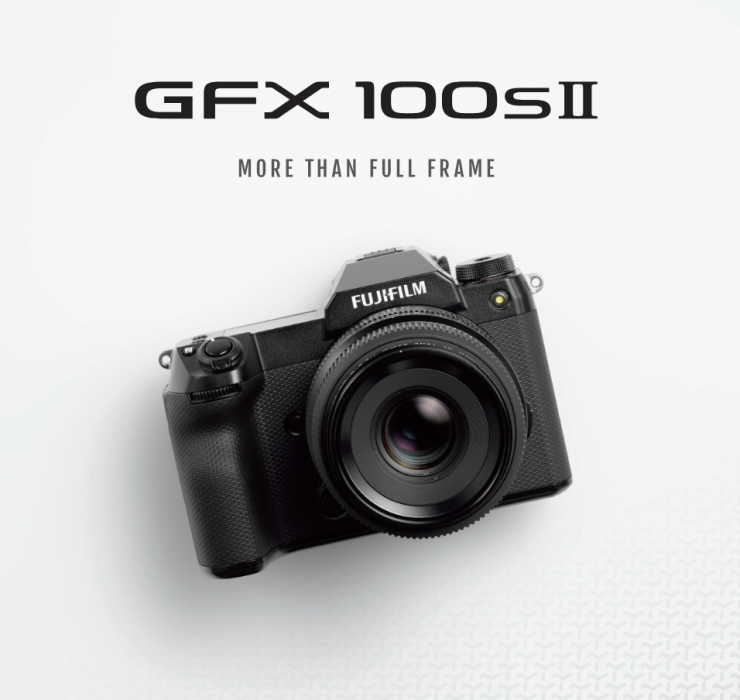
The FUJIFILM GFX100S II will retail for $4,999 USD, which makes it $1,000 USD less than the price of the GFX 100S when it was first announced. It will be available in June.
It is good to see that FUJIFILM has been able to continually bring the price of medium format cameras down. The original GFX100 when it first came out cost $9,999 USD.
The new camera specs are impressive, with a large format sensor, ProRes internal and full-size HDMI for external monitoring, plus the new EFV. All in all an impressive release from FUJIFILM. Save your lunch money because stepping up to this format will require large format lenses, which will be expensive.
GF 500mm f/5.6 R LM OIS WR Lens
Along with the GFX100S II, FUJIFILM also announced the GF 500mm f/5.6 R LM OIS WR Lens.
Key features
- Equivalent to a 396mm Lens on Full Frame
- Fast Linear AF Motor with Focus Presets
- Measures 9.4” Long, Weighs 3 lb
- 6-Stop-Effective Optical IS
- Weather-Resistant Design
- Compatible with GF 1.4X TC WR Teleconverter
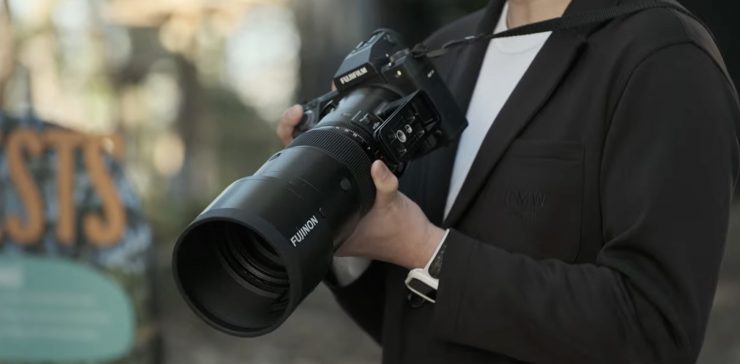
The GF 500mm f/5.6 R LM OIS WR is longest lens available for GFX cameras. This super-telephoto prime balances a long reach with a relatively lightweight and portable design. It weighs in at just 3 lb / 1.36kg.
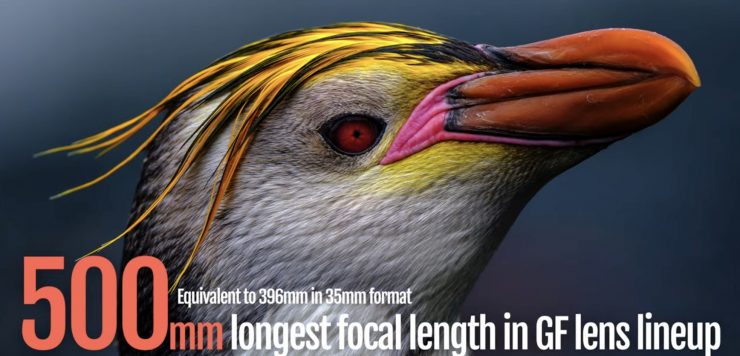
It is said to feature fast autofocus, good image stabilization, and a weather-resistant design. It is also compatible with the GF 1.4X TC WR Teleconverter.
The GF 500mm f/5.6 R LM OIS WR Lens will be available in June for $3,499 USD.

